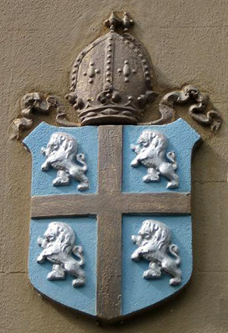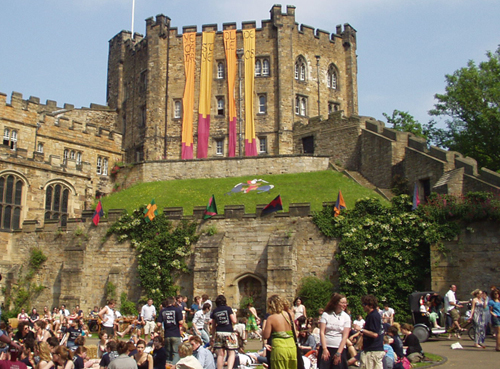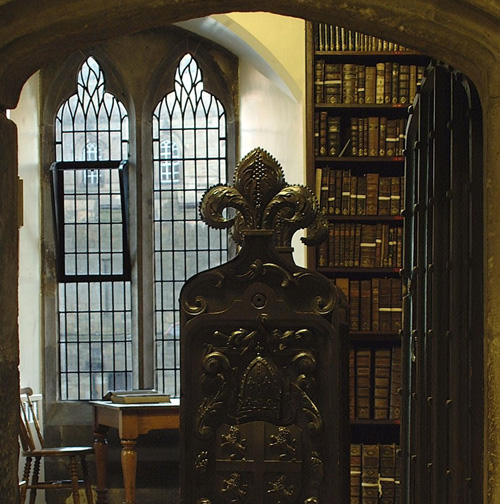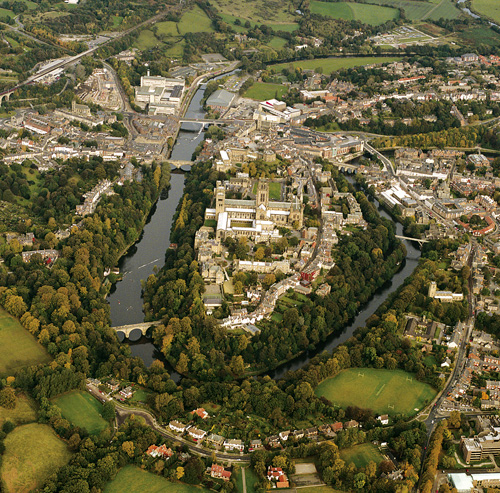
The coat of arms of the Prince Bishops of Durham. The mitre and coronet reflect the combination of religious and secular powers that the bishops held.
Durham Castle and Cathedral World Heritage Site was inscribed by UNESCO in 1986 (among the first UK sites to be listed) in recognition of its Outstanding Universal Value. The site's architectural importance lies in the fact that Durham Cathedral and Castle are among the greatest monuments of the Norman Conquest of Britain, and that Durham Cathedral, built between 1093 and 1133, is one of the finest examples of Norman architecture in Europe.
The site is also outstanding because of its political history: the Castle and Cathedral reflect the unique status of the Prince-Bishops of Durham. The Prince-Bishops were religious leaders who also had secular powers — they governed a virtually autonomous state that formed the buffer zone between England and Scotland from the late eleventh century until 1603.
The Castle and Cathedral have remained in use for almost 1000 years: the Cathedral as a religious building, educational centre, and place of pilgrimage; and the Castle, first as the home of the Prince-Bishops, and then as the home of Durham University, established in 1832 — the third oldest university in England.

Durham University students celebrating Castle Day 2008.
© Maurice Tucker
Religious Significance
Durham Cathedral also has religious and historic significance that transcends its architectural value. In it are the shrines of St Cuthbert, who was instrumental in spreading Christianity in the north of England, and the Venerable Bede, who lived in the seventh century, and is considered 'the father of English history'. Bede is best known for writing about the history of the English church, but was a polymath whose range of scholarship is astounding.
Related Collections
Although not included in the listing of Durham World Heritage Site, both the University and the Cathedral also have renowned libraries, containing very valuable collections of manuscripts, early printed books, and other documents pertaining to the history of the diocese of Durham. Watch a 2 minute video about a book in Durham Cathedral Library here.

Durham World Heritage Site is fortunate in that it still retains valuable collections of documents, manuscripts, and books related to its own history, and to the history of the surrounding region.
The Setting
One of the most striking things about the Durham site is its dramatic setting on a peninsula formed by the meandering of the River Wear. From the west, one can see the relationship of the Castle and Cathedral very clearly (see top image); respectively, they were the complementary seats of secular and religious power. If you visit the WHS Visitor Centre, you can see a computer generated model of the site, turned into a 3-d model using state of the art printing technology, created by the Engineering and Environment Faculty of Northumbria University. Explorar (https://explorar.co.uk) have created a virtual model of this for you to explore here https://explorar.co.uk/durhamcathedral/peninsular3d.

Durham World Heritage Site, as seen from the air. The Durham peninsula is a natural defensive site. Only the peninsula neck was vulnerable, hence the construction of the strongest Castle defenses there. The steep river banks made the rest of the peninsula difficult to attack.
© J.D. Whittaker


